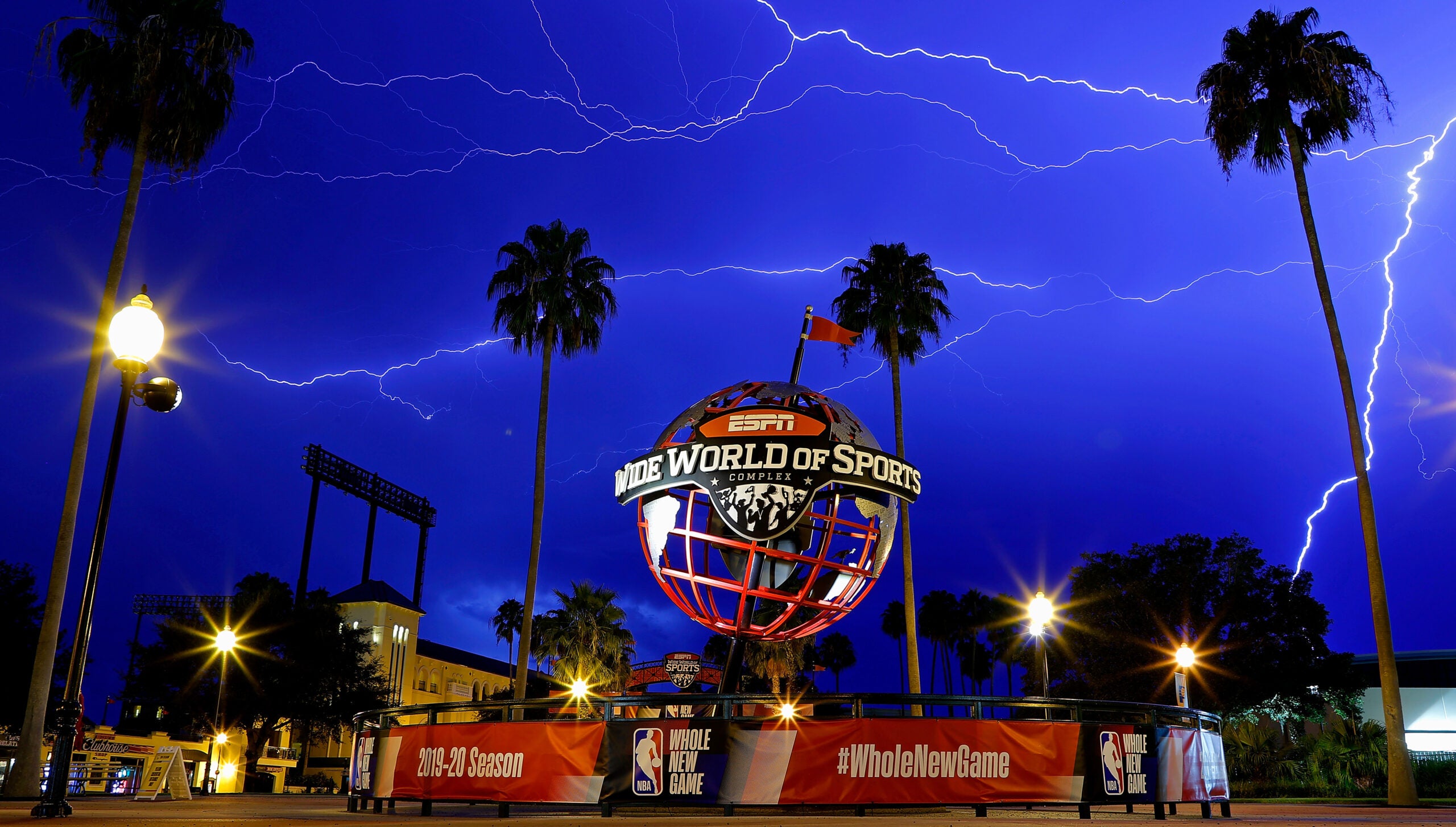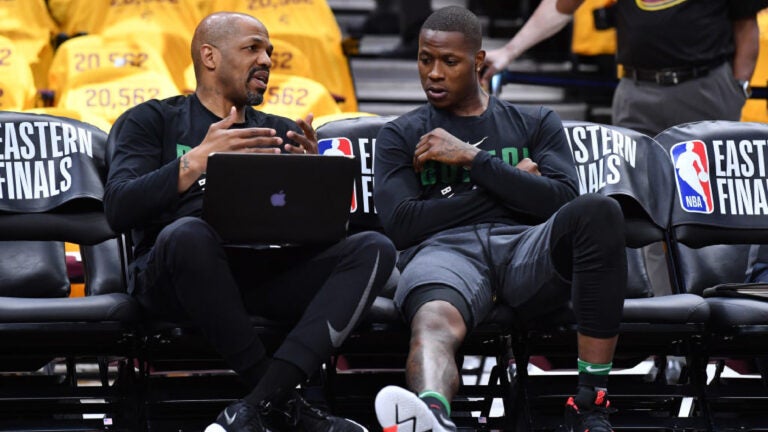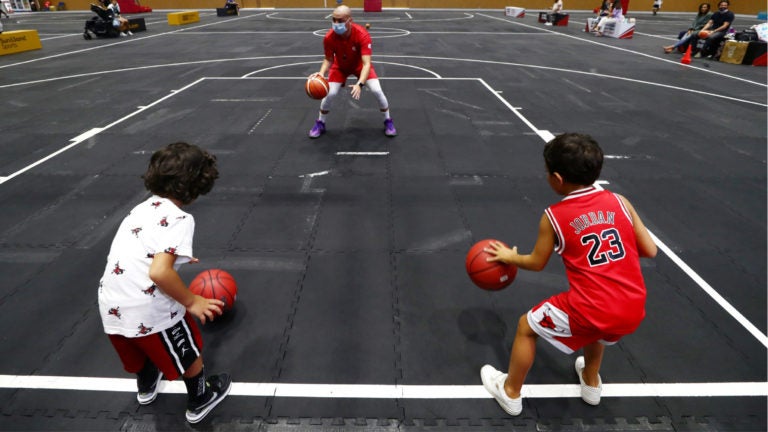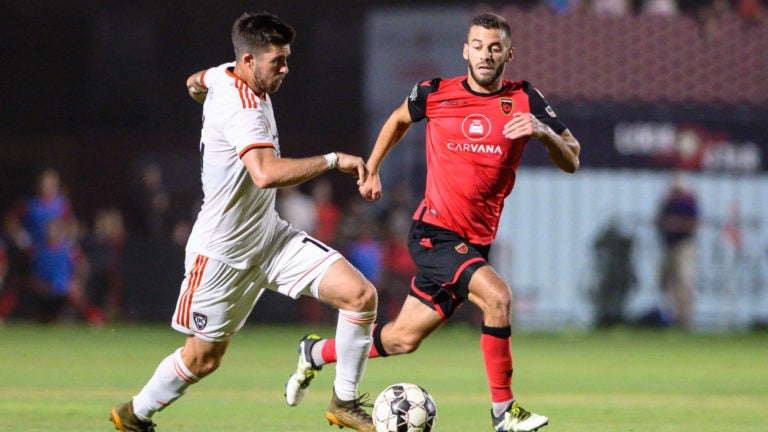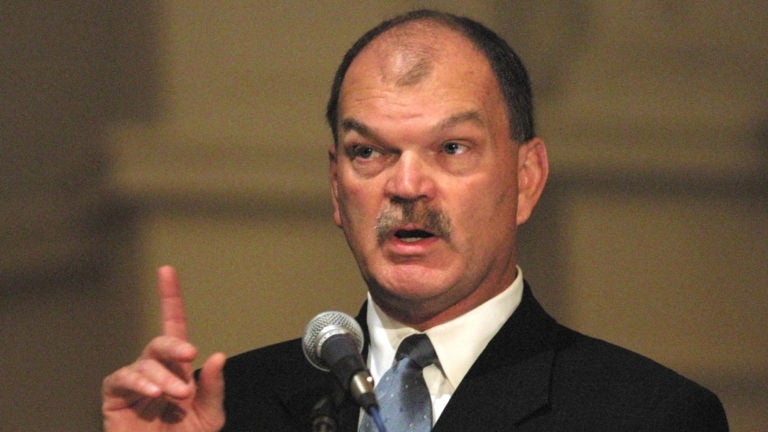Can A Bubble Be Built For College Sport?
Why this matters
As college sport attempts to return this fall, already many teams have seen their own COVID-19 outbreaks. The clear winner this summer from professional sport returning was the NBA's bubble in Florida. As college conferences contemplate their own returns, could the path set by the NBA, be the one to follow?
As the NCAA crafts its championship events for the fall and spring semesters, it is looking to the pros for a roadmap.
During this pandemic, that means putting together a strict, safe, virus-free “bubble,” flush with plentiful testing, strict adherence to public health guidelines -- and a huge investment. After NCAA schools lost an estimated $375 million combined due to the cancelation of the men’s basketball tournaments, there is already a sense of urgency among the association and its membership to find a plan that can be safe, cost-effective, and entertaining for college basketball next spring. Based on the available evidence, the best and perhaps only way to do that is to form a bubble for the tournament, which brings together dozens of student-athletes and staff members from (at least) 68 teams across the country. But especially in a year that has seen an uptick in demonstrations among college athletes and more momentum in the courts toward compensating them, a full-fledged March Madness bubble has the potential to entirely fracture the line between amateurism and high-value performers.
“A bubble reveals the tension at the heart of big-time college sports,” says Dr. Victoria Jackson, a sports historian and clinical assistant professor of history at Arizona State University. “(The NCAA claims to) treat athletes just like all students in one situation, and then the very next minute are acting in ways that treat students who play sports very differently from other students.”
Many universities this year developed additional virtual learning capacity to allow students to stay home during the pandemic, which means student-athletes may be better-suited to transfer their studies this school year than most. It also means that while Football Bowl Subdivision schools kick off their seasons across the country, most are practicing and living on quieter campuses. This acts as its own form of insulation from the virus in some ways, says Dr. Zachary Binney, an epidemiologist and assistant professor of quantitative theory at Emory University.
But to form a true bubble for bowl games, the College Football Playoff, or the spring basketball tournaments, the route taken by pro basketball, soccer, and baseball (for the playoffs) is most sound. Around the country, even relatively careful schools such as the University of North Carolina, which turned to online-only learning for the fall semester, has had new COVID-19 clusters throughout the campus all semester long. Even with consistent testing (like the Pac-12 and Big Ten invested in) and a commitment to adhere to public health rules, it takes one mistake to start a chain of spread that can be hard to stop.
Says Binney: “Do you want to take something as big as March Madness on faith?”
Should the NCAA move toward a bubble for any of its championships or major events this school year, safety will only cost money, but the efforts could cost the association its hold on amateurism. Legislation allowing athletes to benefit from their name, image and likeness is already moving through state assemblies, and Florida will be the first to allow such compensation starting in July of next year. One of the primary demands of Pac-12 football players in August was a 50-50 revenue split of revenue between the conference and the players. To say the floodgates have opened on changing the financial environment of major college sports would be an understatement.
Could that change how student-athletes approach the value proposition of participating in a Bubble?
“The lesson coming out of the professional Bubble is that a big part of why the athletes were there is that they needed to get paid,” says Jackson. “The NBA, they definitely needed to finish the season because the (players) get a 50-50 revenue split. Setting aside the culture of sacrifice that is so embedded in college sports where you do anything for the team, young athletes do want to play. But once they’re in the Bubble, with the stories that have been coming out of the NBA Bubble and WNBA Bubble, it’s hard to be away from everyone and just playing your sport.”
Revenue splits or appearances in local ads is one thing, but the fact remains that not participating would take a precious year off these student-athletes’ careers. That goes for the middle linebacker hoping to be drafted as well as the track star nearing the end of her competitive career.
“It (would be) such a great self-sacrifice to give that up at a moment that is so critical for those who want to go on and play professionally and those who may not,” adds Jackson. “This is the high-water mark of your athletic career if you don’t go on to play professionally. That’s why we haven’t seen it in the past.”
In particular, the choice stands to harm Black student-athletes and those of color most. A study this year from the National Bureau of Economic Research detailed how revenue sports football and basketball -- whose championships the NCAA is trying to save with these bubbles -- disproportionately use the labor of low-income, racial minority student-athletes to fund the “rent” necessary to run non-revenue sport programs that mostly benefit students from more wealthy backgrounds. Another recent study from Ramogi Huma and the National College Players Association showed how the demographics of sport rosters compared with athletic departments creates an environment in which “NCAA amateurism imposes a serious shift in wealth – from predominantly Black football and basketball players suffering the lowest graduation rates to predominantly White coaches, ADs, and commissioners.”
Championship bubbles stand to metastasize the same discrepancies between more- and less-well-off student-athletes. The NCAA is trying to save these events because they are the biggest cash cows in the business, not because there is anything of concrete value long-term to the student-athletes about playing the NCAA tournament or not. That doesn’t make it any less risky.
“(College sport) doesn’t operate in a different universe from the rest of us as much as some ADs and presidents would like to think it does,” says Binney. “There’s really no getting around the epidemiological fact that large gatherings are more contagious for disease spread.”
After initial consternation about its plans, the NCAA is indeed moving forward with bubble plans. The association applied to trademark the phrase “Battle in the Bubble” last month for application on merchandise and broadcasts. Trademark attorney and University of Florida sports law professor Darren Heitner called it “a small cost today to accomplish a goal that they have decided is worth reaching.” A full legal process for a wide-reaching trademark like this one might usually take up to nine months, so the association is moving urgently. The NCAA also impaneled an intradivison COVID-19 Medical Advisory Group this month that will monitor data and help with public health guidance on college sport.
In addition, Villanova head men’s basketball coach Jay Wright indicated the Big East is considering a bubble even for conference games this winter, while ACC coaches this month came together to push toward involving even more teams in the men’s tournament. Kentucky head basketball coach John Calipari was among the first and most vocal to get behind a bubble tournament. Across the power structure of college sport, there is momentum behind a bubble.
Were a college bubble to form, the logistics would be similar to what goes on inside the NBA’s clean site at Walt Disney World, from regular testing to maintain a clean environment, plus universal masking, restricted entry and exit and monitored social distancing to ensure one case doesn’t become an outbreak. Testing, according to Binney, would not even have to be daily if programs were fully safe in a bubble.
Yet diverging value propositions for student-athletes and athletic departments as well as changing power dynamics across American society make a bubble a potential breeding ground for the type of demonstration the NCAA has historically prohibited among student-athletes. High-profile stars at many southern schools saw this year the power they had in their communities, including Mississippi State running back Kylin Hill’s efforts to get the state flag changed. Put hundreds of empowered, potentially frustrated student-athletes in one place, and that type of action might be ratcheted up.
“When you have a Bubble that’s not on college campuses and athletes are so far removed from school, that amateur equals educational equation breaks down,” says Jackson. “The athletes who’ve demonstrated they’ve already been thinking and talking about this, they might have big plans for this Bubble, and it’s just a matter of if they can get everyone on board.”
In the past, players like Nigel Hayes and Bronson Koenig of the 2016 University of Wisconsin men’s basketball team generated momentum toward striking games but fell short of unanimous agreement among teammates. Based on what we’ve seen from Hill, Chuba Hubbard and others on the football side already, it’s likely basketball players would follow suit. While they may not have traditional leverage (the tournament could go on without them), public opinion increasingly favors college athletes’ ability to earn money, and uprisings around the country have already generated considerable change in American society. As with pro sports, it’s clear from both sides that completing the season is the goal, but athletes have shown they can and will dictate the means to that end.
Another missed NCAA tournament paycheck would be dire for college athletics, but pulling it off could mean cracking an even bigger hole in amateurism. Because of that paradox, a bubble is likely to be a quite complicated solution to an admittedly massive problem for college sport.
Monthly Issue
The Reset of College Sport
Sport at the college level in America is facing issues reflective of the world at large. From the calls for racial equality, labor disputes and discussions, to health and safety concerns with playing in a pandemic - what will this reset moment look like?

